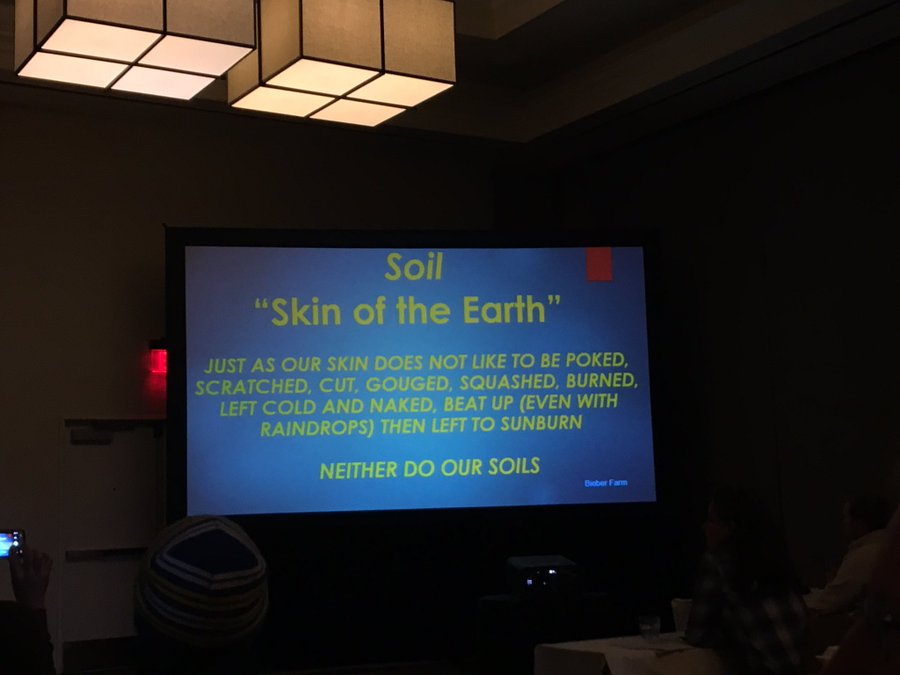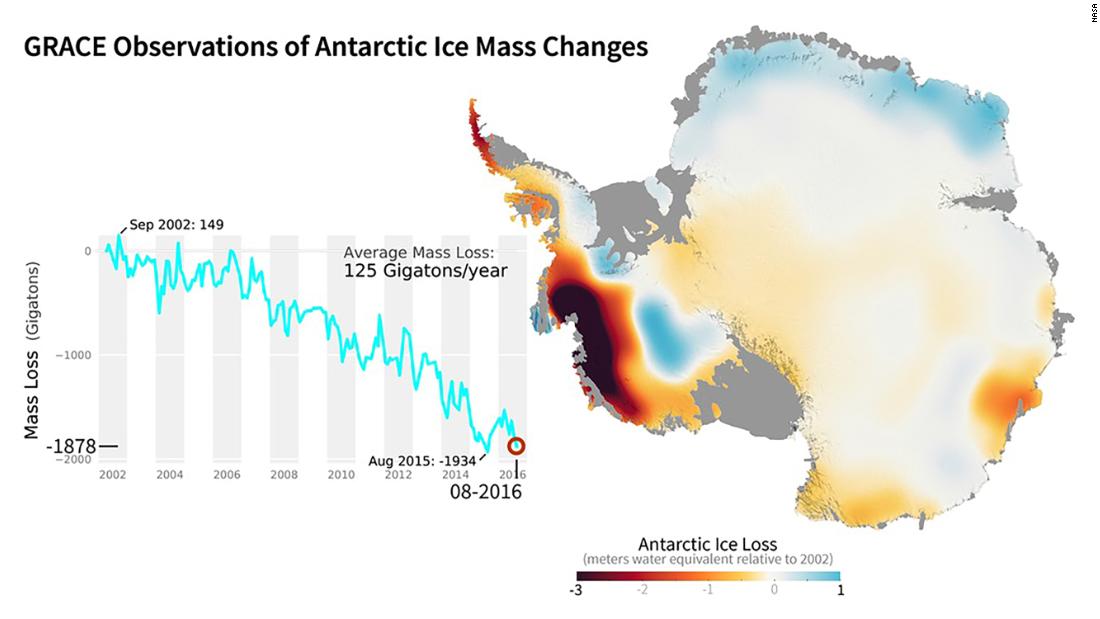The New York Times – Opinion
How to Reduce Shootings

By Nicholas Kristof, Graphics by Bill Marsh February 15, 2018
Inevitably, predictably, fatefully, another mass shooting breaks our hearts. This time, it was a school shooting in Florida on Wednesday that left at least 17 dead at the hands of 19-year-old gunman and his AR-15 semiautomatic rifle.
But what is perhaps most heartbreaking of all is that they shouldn’t be shocking. People all over the world become furious and try to harm others, but only in the United States do we suffer such mass shootings so regularly; only in the United States do we lose one person every 15 minutes to gun violence.
So let’s not just mourn the dead, let’s not just lower flags and make somber speeches. Let’s also learn lessons from these tragedies, so that there can be fewer of them. In particular, I suggest that we try a new approach to reducing gun violence — a public health strategy. These graphics and much of this text are from a visual essay I did in November after a church shooting in Texas; sadly, the material will continue to be relevant until we not only grieve but also act.
America Has More Guns Than Any Other Country
The first step is to understand the scale of the challenge America faces: The U.S. has more than 300 million guns – roughly one for every citizen – and stands out as well for its gun death rates. At the other extreme, Japan has less than one gun per 100 people, and typically fewer than 10 gun deaths a year in the entire country.
Guns per 100 people
The United States stands alone among developed countries: It has by far the highest rate of firearms ownership.
88.8 UNITED STATES
45.7 SWITZERLAND
31.6 SWEDEN
31.2 FRANCE
30.8 CANADA
30.3 GERMANY
15.0 AUSTRALIA
11.9 ITALY
10.4 SPAIN
6.2 ENGLAND, WALES
0.6 JAPAN
Gun murders per 100,000 people
America’s private arsenal is six times as lethal as Canada’s, and 30 times worse than Australia’s.
3.0 UNITED STATES
0.7 ITALY
0.5 CANADA
0.3 SWEDEN
0.2 GERMANY
0.2 SWITZERLAND
0.1 AUSTRALIA
0.1 ENGLAND, WALES
0.1 FRANCE
0.1 SPAIN
0 JAPAN
The New York Times | Sources: United Nations Office on Drugs and Crime (gun murders); Small Arms Survey (guns per 100 people) |Murder data for U.S., Canada, Sweden, Switzerland, Australia and Spain from 2015 and latest available for other countries; 2007 data for guns per 100 people.
We Have a Model for Regulating Guns: Automobiles
Gun enthusiasts often protest: Cars kill about as many people as guns, and we don’t ban them! No, but automobiles are actually a model for the public health approach I’m suggesting.
We don’t ban cars, but we work hard to regulate them – and limit access to them – so as to reduce the death toll they cause. This has been spectacularly successful, reducing the death rate per 100 million miles driven by 95 percent since 1921.
Take a look at the history of motor vehicle safety since World War II:
Deaths per 100 million vehicle miles traveled
1946 (9.35 deaths)
1950 First seat-belt offered in an American car (7 deaths)
1968 First federal safety standards for cars (5 deaths)
1974 55 m.p.h. national speed limit (4 deaths)
1978 Tennessee is first to require child safety seats (3.5 deaths)
1984 New York is first to require seat belt use (2.5 deaths)
1993 Car safety ratings introduced (2 deaths)
1999 Airbags, invented in 1951, become mandatory (1.80 deaths)
2000 Mandatory reporting of defects by car-makers (1.75 deaths)
2016 (1.18 deaths per 100 million miles)
The New York Times | Source: National Highway Traffic Safety Administration
The Liberal Approach Is Ineffective. Use a Public Health Approach Instead.
Frankly, liberal opposition to guns has often been ineffective, and sometimes counterproductive. The 10-year ban on assault weapons accomplished little, partly because definitions were about cosmetic features like bayonet mounts (and partly because even before the ban, such guns were used in only 2 percent of crimes).
The left sometimes focuses on “gun control,” which scares off gun owners and leads to more gun sales. A better framing is “gun safety” or “reducing gun violence,” and using auto safety as a model—constant efforts to make the products safer and to limit access by people who are most likely to misuse them.
What would a public health approach look like for guns if it were modeled after cars? It would include:
Background Checks: 22 percent of guns are obtained without one.
Protection Orders: Keep men who are subject to domestic violence protection orders from having guns.
Ban Under-21’s: A ban on people under 21 purchasing firearms (this is already the case in many states).
Safe Storage: These include trigger locks as well as guns and ammunition stored separately, especially when children are in the house.
Straw Purchases: Tighter enforcement of laws on straw purchases of weapons, and some limits on how many guns can be purchased in a month.
Ammunition Checks: Experimentation with a one-time background check for anybody buying ammunition.
End Immunity: End immunity for firearm companies. That’s a subsidy to a particular industry.
Ban Bump Stocks: A ban on bump stocks of the kind used in Las Vegas to mimic automatic weapon fire.
Research ‘Smart Guns’: “Smart guns” fire only after a fingerprint or PIN is entered, or if used near a particular bracelet.
If someone steals my iPhone, it’s useless, and the same should be true of guns. Gun manufacturers made child-proof guns back in the 19th century (before dropping them), and it’s time to advance that technology today. Some combination of smart guns and safe storage would also reduce the number of firearms stolen in the U.S. each year, now about 200,000, and available to criminals.
We also need to figure out whether gun buybacks, often conducted by police departments, are cost-effective and help reduce violence. And we can experiment more with anti-gang initiatives, such as Cure Violence, that have a good record in reducing shootings.
Fewer Guns = Fewer Deaths
It is true that guns are occasionally used to stop violence. But contrary to what the National Rifle Association suggests, this is rare. One study by the Violence Policy Center found that in 2012 there were 259 justifiable homicides by a private citizen using a firearm.
In Order, Estimated Percent of Households With Guns, by State. U.S Average is 32%.
Less Than 20%: Hawaii, Massachusetts, Rhode Island, New Jersey, New York, Delaware, Connecticut, Illinois, California
20% to 40%: Florida, Maryland, Washington, New Hampshire, Indiana, Ohio
40% to 50%: Colorado, Pennsylvania, Iowa, Minnesota, Arizona, Nevada, North Dakota, Michigan, Virginia, Oregon, New Mexico, North Carolina, Texas, South Carolina, Nebraska, Kansas, Georgia, Missouri, Oklahoma, Wisconsin, Louisiana, Kentucky, Utah, Alabama
50% to 60%: Maine, Tennessee, South Dakota, West Virginia, Arkansas, Alaska, Vermont, Mississippi
70%: Idaho. 75%: Montana. + 80%: Wyoming
Source: Michael Siegel, Boston University School of Public Health
Gun Law ‘Grades’ and Gun Death Rates
The Law Center to Prevent Gun Violence finds that states where guns are more regulated tend to have lower gun death rates. In its grading system, the strongest gun regulations get an “A;” the weakest, an “F.”
Gun Death Rate Per 100,000
Grade A
Hawaii 2.7, Massachusetts 3.1, New York 4.2, Connecticut 4.9, New Jersey 5.3, California 7.4, Maryland 9.0
Grade B
Rhode Island 3.0, Illinois 9.0, Washington 9.6, Delaware 10.9
Grade C
Minnesota 6.6, Iowa 7.4, Wisconsin 8.2, Pennsylvania 10.4, Michigan 11.0, Oregon 11.7, Colorado 12.2
Grade D:
New Hampshire 8.6, Nebraska 9.4, Virginia 10.3, Ohio 10.3, North Carolina 11.8, Indiana 12.3
Grade F:
Maine 9.4, Vermont 10.2, South Dakota 10.3, Texas 10.6, Kansas 11.3, Florida 11.5, North Dakota 12.0, Utah 12.4, Idaho 13.2, Arizona 13.4, Georgia 13.6, Kentucky 13.9 West Virginia 14.5, Nevada* 14.7, Tennessee 15.1, Missouri 15.2, South Carolina 15.4, Oklahoma 15.6, New Mexico 15.8, Montana 16.1, Wyoming 16.3, Arkansas 16.5, Alabama 16.8, Mississippi 18.3, Louisiana 19.0, Alaska 19.1
*Nevada’s grade of F would improve to a C-minus if a recently passed ballot initiative mandating universal background checks is implemented. So far, the state has failed to do so. Source: Law Center to Prevent Gun Violence.
But the problem is that lax laws too often make it easy not only for good guys to get guns, but also for bad guys to get guns. The evidence is overwhelming that overall more guns and more relaxed gun laws lead to more violent deaths and injuries. One study published in the Annals of Internal Medicine found that a gun in the house was associated with an increased risk of a gun death, particularly by suicide but also apparently by homicide.
In 2015, Gov. Greg Abbott of Texas tweeted that he was “embarrassed” that his state was ranked second (behind California) in requests to buy new guns, albeit still with one million requests. “Let’s pick up the pace Texans,” he wrote. Abbott apparently believes, along with the N.R.A., that more guns make a society more safe, but statistics dispute that. Abbott should look at those charts.
Greg Abbott: I’m EMBARRASSED: Texas #2 in nation for new gun purchases, behind CALIFORNIA. Let’s pick up the pace Texans.
Mass Shootings Are Not the Main Cause of Loss of Life
Critics will say that the kind of measures I cite wouldn’t prevent many shootings. The Las Vegas carnage, for example, might not have been prevented by any of the suggestions I make.
That’s true, and there’s no magic wand available. Yet remember that although it is mass shootings that get our attention, they are not the main cause of loss of life. Much more typical is a friend who shoots another, a husband who kills his wife – or, most common of all, a man who kills himself. Skeptics will say that if people want to kill themselves, there’s nothing we can do. In fact, it turns out that if you make suicide a bit more difficult, suicide rates drop.
Here are the figures showing that mass shootings are a modest share of the total, and the same is true of self-defense – despite what the N.R.A. might have you believe.
Gun Suicides: About 22,000
Homicides: About 11,760
Other Causes: 3,500
Victims Killing Perpetrators in Self Defense: 589 1.6% of gun deaths
Deaths From Mass Shootings: 456 1.2% of gun deaths
The New York Times | Source: Gun Violence Archive
America Is Moving in the Wrong Direction
Yet while we should be moving toward sensible regulation, in fact we’ve been moving in the opposite direction. Gun laws have been loosened in many parts of the country. Check out these maps:
States Allowing in Red. Not Allowing in White.
1st Map is for Concealed Carry 1991 compared to Today
2nd Map is for Open Carry (Handguns) 1991 compared to Today
3rd Map is for Open Carry (Long Guns) 1991 compared to Today

The New York Times | Source: Michael Siegel, Boston University School of Public Health
Tightening Gun Laws Lowered Firearm Homicide Rates
For skeptics who think that gun laws don’t make a difference, consider what happened in two states, Missouri and Connecticut. In 1995, Connecticut tightened licensing laws, while in 2007 Missouri eased gun laws.
The upshot? After tightening gun laws, firearm homicide rates dropped 40 percent in Connecticut. And after Missouri eased gun laws, gun homicide rates rose 25 percent.
Connecticut after 1995 law tightening licensing requirements:
Change in rate of gun homicide –40%, rate of gun suicide–15%
Missouri after 2007 repeal of license requirements:
Change in rate of gun homicide +25%, rate of gun suicide +16%
The New York Times | Source: Johns Hopkins School of Public Health
One of the lessons of gun research is that we often focus just on firearms themselves, when it may be more productive to focus on who gets access to them. A car or gun is usually safe in the hands of a 45-year-old woman with no criminal record, but may be dangerous when used by a 19-year-old felon with a history of alcohol offenses or domestic violence protection orders.
Yet our laws have often focused more on weapons themselves (such as the assault weapons ban) rather than on access. In many places, there is more rigorous screening of people who want to adopt dogs than of people who want to purchase firearms.
In these two states, the laws affected access, and although there’s some indication that other factors were also involved in Connecticut (and correlations don’t prove causation), the outcomes are worth pondering.
There Is a Shocking Lack of Research on Guns
There’s simply a scandalous lack of research on gun violence, largely because the N.R.A. is extremely hostile to such research and Congress rolls over. When the Centers for Disease Control and Prevention did try to research gun violence, Congress responded by cutting its funding.
Here is the American toll from four diseases and firearms over the years 1973-2012 – and the number of National Institutes of Health research grants to explore each problem over that same time.
Number of cases of a Disease, and N.I.H. research awards granted
Rabies: 65 cases…..89 N.I.H. research awards granted
Polio: 266 cases…..129 N.I.H. research awards granted
Cholera: 400 cases…..212 N.I.H. research awards granted
Diphtheria 1,337 cases…..56 N.I.H. research awards granted
Firearm Injuries >4 million…..3 N.I.H. research awards granted
The New York Times | Source: University of Chicago Crime Lab
The Right Type of Training Could Go a Long Way
One approach that could reduce the abuse of guns is better training. As a 13-year-old farm boy in Oregon, I attended a N.R.A. gun safety class (which came with a one-year membership to the N.R.A., making me an N.R.A. alum who despises what that organization has become). These classes can be very useful, and audits found that more than 80 percent cover such matters as checking the gun to see if it’s loaded, keeping one’s finger off the trigger until ready to fire and being certain of the target.
Yet the audits also suggest that trainers are more likely to advocate for the N.R.A. or for carrying guns than for, say, safe storage. This is a missed opportunity, for all classes should cover the risks of guns and alcohol, the risks of abuse with suicide and domestic violence, the need for safe storage, and so on. Here’s what researchers found that the gun classes they audited actually covered:
Percent of Classes Where Gun Topic was Discussed or Not Discussed:
Trainers encouraged gun carrying 81%, Not Discussed 19 %
Encouraged gun ownership 76%, Not Discussed 24%
Prevent unsupervised access by children 70%, Not Discussed 30%
Encouraged gun use for self-defense 69%, Not Discussed 31%
Ricochet 60%, Not Discussed 40%
Theft prevention 60%, Not Discussed 40%
Encouraged membership in gun-rights group 56%, Not Discussed 44%
Legal ramifications of shooting in self-defense 55%, Not Discussed 45%
Child access laws 53%, Not Discussed 47%
Recommendation: when not in use, store unloaded 50%, Not Discussed 50%
Recommendation: use gun only as last resort 45%, Not Discussed 55%
Young children and gun accidents 45%, Not Discussed 55%
Decision-making in crises 30%, Not Discussed 70%
Theft is an important source of firearms used in crime 20%, Not Discussed 80%
Techniques for de-escalating threats 15%, Not Discussed 85%
Recommendation: report stolen firearms 10%, Not Discussed 90%
Watch for signs of suicide in household members 10%, Not Discussed 90%
Domestic violence risk 10%, Not Discussed 90%
The New York Times | Source: David Hemenway, Injury Prevention |The classes studied, some of which were required by law, took place in 7 Northeast states.
A Way Forward: On Some Issues, Majorities Agree
It may sometimes seem hopeless to make progress on gun violence, especially with the N.R.A. seemingly holding Congress hostage. But I’m more optimistic.
Look, we all agree on some kinds of curbs on guns. Nobody believes that people should be able to drive a tank down Main Street, or have an anti-aircraft gun in the backyard. I’ve been to parts of northern Yemen where one could actually buy a tank or an anti-aircraft gun, as well as fully automatic weapons — and that area’s now embroiled in a civil war – but fortunately in America we have agreed to ban those kinds of weaponry.
So the question isn’t whether we will restrict firearms, but where to draw the line and precisely which ones to restrict.
Check out these polling numbers as a basis for action on gun safety:
Agree with the following:
Gun households: and Households with no guns:
Background checks for all gun buyers 93%, 96%
Preventing the mentally ill from buying guns 89%, 89%
Nationwide ban on the sale of guns to people convicted of violent crimes 88%, 85%
Barring gun purchases by people on no-fly or watch lists 82%, 84%
Background checks for private sales and at gun shows 77%, 87%
Federal mandatory waiting period on all gun purchases 72%, 89%
A ban on modifications that make a semi- automatic gun work like an automatic gun 67%, 79%
A ban on the sale of guns to people convicted of violent crimes would reduce gun violence 61%, 75%
New gun laws will not interfere with the right to own guns 57%, 71%
Congress is not doing enough to reduce gun violence 56%, 81%
Creating a federal database to track gun sales 54%, 80%
A ban on the sale of high-capacity ammunition magazines (10+ bullets)* 52, 77
The New York Times | Sources: Pew Research Center survey conducted in March and April (questions on mental illness, no-fly lists, background checks for private sales and federal database); Quinnipiac University National Poll conducted Oct. 5-10 (all other questions)|*A Pew Research Center survey found only 44 percent of gun owners favored such a ban.
Looking ahead, I’m optimistic that there can be progress at the state level, and some of the necessary research funding will come from private foundations. Maybe some police departments will put in orders for smart guns to help create a market.
But the real impetus for change will come because the public favors it. In particular, note that 93 percent of people even in gun households favor universal background checks for gun purchases.
The terrible truth is that Wednesday’s school shooting was 100 percent predictable. So is the next one. After each such incident, we mourn the deaths and sympathize with the victims, but we do nothing fundamental to reduce our vulnerability.
Some of you will protest (as President Trump did the last time) that it’s too soon to talk about guns, or that it is disrespectful to the dead to use such a tragedy to score political points. Yet more Americans have died from gun violence, including suicides, since 1970 (about 1.4 million) than in all the wars in American history going back to the Revolutionary War (about 1.3 million). And it’s not just gang members: In a typical year, more preschoolers are shot dead in America (about 75) than police officers are.
Yes, making America safer will be hard: There are no perfect solutions. The Second Amendment is one constraint, and so is our polarized political system and the power of the gun lobby. There’s a lot of talk about banning assault weapons, for example, but the 10-year assault weapons ban didn’t accomplish much for reducing gun violence, partly because defining assault weapons proved to be much more complex than anybody had anticipated (in the end, the definition depended partly on cosmetic features). And new restrictions have limited effectiveness because we have delayed so long that there are already so many guns out there. So it’s unclear how effective some of my suggestions will be, and in any case this will be a long, uncertain, uphill process.
But automobiles are a reminder that we can chip away at a large problem through a public health approach: Just as auto safety improvements have left us far better off, it seems plausible to some gun policy experts that a sensible, politically feasible set of public health steps could over time reduce firearm deaths in America by one-third — or more than 10,000 lives saved each year.
So let’s not just shed tears for the dead, give somber speeches and lower flags. Let’s get started and save lives. Let’s not accept that school classrooms can turn any moment into war zones.
I invite you to sign up for my free, twice-weekly email newsletter. Please also join me on Facebook and Google+, watch my YouTube videos and follow me on Twitter (@NickKristof).




 An Iowa State University student collects water infiltration data in a field with cover crops, as part of a Leopold Center supported research project studying the long-term impact of cereal rye on cash crop yields. (Photo courtesy The Leopold Center)
An Iowa State University student collects water infiltration data in a field with cover crops, as part of a Leopold Center supported research project studying the long-term impact of cereal rye on cash crop yields. (Photo courtesy The Leopold Center) A Leopold Center-funded a grant project supported Congera Alex, originally from Burundi, shown here transplanting his crops in early spring in a community garden in Des Moines, Iowa. (Photo courtesy The Leopold Center)
A Leopold Center-funded a grant project supported Congera Alex, originally from Burundi, shown here transplanting his crops in early spring in a community garden in Des Moines, Iowa. (Photo courtesy The Leopold Center) No-till farming started as a way to keep costs down for conventional farmers in danger of losing their land. Now it has become a subculture and a way of life for outsider farmers all over rural America.
No-till farming started as a way to keep costs down for conventional farmers in danger of losing their land. Now it has become a subculture and a way of life for outsider farmers all over rural America.  Jimmy Emmons on his farm in Leedey, Oklahoma. Courtesy of No-till in the Plains.
Jimmy Emmons on his farm in Leedey, Oklahoma. Courtesy of No-till in the Plains.
 Photo of dark, carbon-rich soil courtesy of North Central Sustainable Agriculture Research and Education.
Photo of dark, carbon-rich soil courtesy of North Central Sustainable Agriculture Research and Education. Photo courtesy of No-till on the Plains.
Photo courtesy of No-till on the Plains. Soybeans coming up in a rye cover crop. Photo by Lander Legge for USDA Natural Resources Conservation Service (NRCS).
Soybeans coming up in a rye cover crop. Photo by Lander Legge for USDA Natural Resources Conservation Service (NRCS).
 Changes in sea level observed between 1992 and 2014. Orange/red colors represent higher sea levels, while blue colors show where sea levels are lower.
Changes in sea level observed between 1992 and 2014. Orange/red colors represent higher sea levels, while blue colors show where sea levels are lower. Nerem provided this chart showing sea level projections to 2100 using the newly calculated acceleration rate.
Nerem provided this chart showing sea level projections to 2100 using the newly calculated acceleration rate. NASA’s GRACE mission used satellites to measure changes in ice mass. This image shows areas of Antarctica that gained or lost ice between 2002 and 2016.
NASA’s GRACE mission used satellites to measure changes in ice mass. This image shows areas of Antarctica that gained or lost ice between 2002 and 2016. President Donald Trump looks on before signing a proclamation to honor Dr. Martin Luther King, Jr. Day in the White House on Jan. 12, 2018 in Washington, D.C. (Photo: Olivier Douliery, Abaca Press, TNS)
President Donald Trump looks on before signing a proclamation to honor Dr. Martin Luther King, Jr. Day in the White House on Jan. 12, 2018 in Washington, D.C. (Photo: Olivier Douliery, Abaca Press, TNS) Credit: Michael S. Williamson/The Washington Post via Getty Images
Credit: Michael S. Williamson/The Washington Post via Getty Images